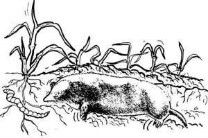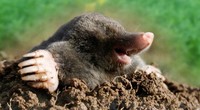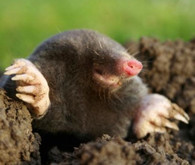In a blog article we posted on March 29 th, 2014 we talked about how birds need grubs for protein and that recent deforestation and pesticide spraying have dissipated much of this natural protein source. We also touched on how birds going through their molting process have an increased demand for protein to make new feathers. Today I’d like to talk about another reason why grubs naturally found in the soil are becoming scarce, and why it’s important that we do our part to replace the protein that is being missed from our wild bird’s diet.
Much of the west
and southwest are experiencing a severe drought that appears to be
intensifying. Americans living in these
parts are having to take drastic measures to conserve water
Fig. 1: Here we can see the drought in September, 2014 with the driest areas occurring in the southern part of California.

Fig. 2: Here we can see the drought on October 21 st, 2014 expanding, affecting more states throughout the West and Southwest.

So, why does this
drought have anything to do with wild birds receiving adequate nutrition and
protein sources? Because of moles. Moles are the natural predator of beetles,
worms, and all things creepy-crawly.
They are voracious feeders and eat their weight in grubs every day. In fact, it has been shown through
experimentation that they literally are insatiable and will continue eating as
long as they are provided with food of their liking. Moles can dig 15 feet per hour, and generally
will dig around 100 feet per day

In normal
conditions where the soil is moist, worms are likely to venture to the top of
the soil where they’re protected by the moisture of the grass. This makes for an equal playing field between
the mole and the wild bird. Sometimes
the mole might get the worm. Other
times, the mole may be a little slower than the bird and “the early bird gets
the worm.” However, this game is
completely changed in the favor of the mole during drought conditions. When soil is dry and cracked near the
surface, worms tunnel deeper and closer to moisture. Moles will follow them deep down into the
soil, underneath sidewalks, and along sewer drain fields

How can we
help? We can start by providing worms
above ground where birds have access to them.
Mealworms are an excellent source of protein for wild birds, and they
can be offered either in a feeder, on the pavement, or in the grass! Because the ground is so dry, you don’t have
to worry about moles stealing the worms because moles have trouble tunneling
through dry compact dirt
References
Association of California Water Agencies. (2014). Drought 2014: What You Need To Know .
Retrieved from Save Our Water:
http://www.saveourh2o.org/content/Drought2014WhatY...
Bostock, M., & Quealy, K. (2014, September 8). Mapping the Spread of Drought Across the
U.S. The New York Times .
Henderson, R. F. (2005). Moles. Retrieved from The Internet Center for Wildlife Damage
Management: http://icwdm.org/handbook/mammals/moles.asp
National Climatic Data Center. (2014, October 24). Historical Palmer Drought Indices.
Retrieved from NOAA: http://www.ncdc.noaa.gov/temp-and-precip/drought/...
palmers.php?index=pdi&month[]=9&beg_year=2014&end_year=2014&submitted=Sub
mit
Washington Department of Fish and Wildlife. (2014). Moles. Retrieved from Living with
Wildlife: http://wdfw.wa.gov/living/moles.html

